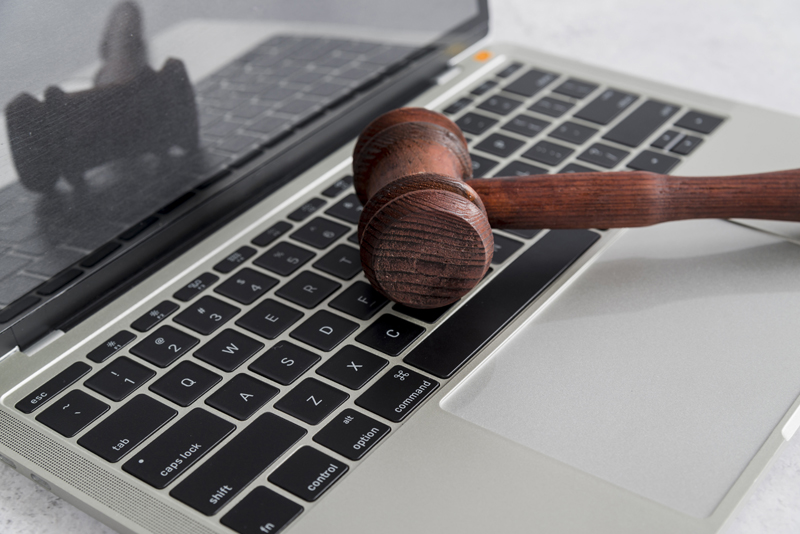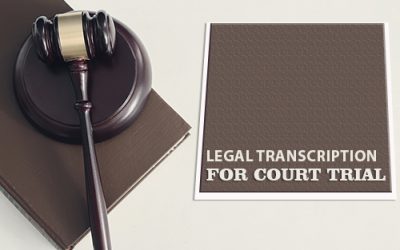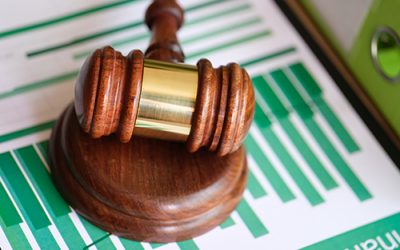Digitization has changed the world, enabling businesses to move online, streamline workflow, increase productivity, and save time and space. Today, social distancing measures to fight the coronavirus pandemic are speeding up digitization across many industries, including the legal field. Supported by advanced technologies and digital transcription service providers, courts in the U.S. are moving to remote proceedings to stay accessible to the public during this crisis.
The Coronavirus Aid, Relief, and Economic Security (CARES) Act allows for the use of videoconferencing in certain judicial matters. In New York State, all 58 counties have shifted to essential and emergency legal proceedings to phone and video conference, according to a Brooklyn Daily Eagle report. Orders have moved many other court functions, including criminal court arraignments and Family Court matters, to telephone or video conferencing where practicable.
The Michigan Supreme Court also issued emergency orders restricting courtroom access and allowing for remote court proceedings (mlive.com). The Virtual Courtroom Task Force assisted the court in preparing these standards, guidelines, and best practices to conduct proceedings remotely. Here are the guidelines for virtual hearings, attorney/client communication, and public/press access, creating a record, and logging standards:
- Virtual hearings
- According to the standard procedure, at the start of each hearing, the court must verify with each participant that they can proceed and that they are aware of the procedure for participation, including the time and method of participating. For virtual hearings, the court should address, on the record, that the parties are waiving any right they may have to be present in the courtroom for the proceeding. If there is a victim, the court must ensure that the victim’s rights are addressed on the record.
- When using videoconferencing technology or telephonic equipment, best practice is for the system to feed directly into the court’s recording system. If Zoom videoconferencing is used, the courtroom’s recording system will record the proceeding and the software’s audio transcript can be used to create a log for future digital transcription. A digital recording application such as Notewise also allows users to record computer-based conference calls and make time-stamped notes, either manually or through quick keys.
- When using Zoom, best practice is to change a participant’s phone number to their name after they sign in and are in the waiting room.
- For hearings, the court should facilitate activate the “Waiting Room” function in Zoom in order to control who is present at the hearing and prevent participation by those who are not litigants in that case. This allows the courtroom to be kept secure while still allowing the public to view proceedings via YouTube.
- Courts should post their daily dockets (on the court’s website, if available), indicate the docket on which virtual hearings are being held and provide instructions on how to access virtual hearings. The daily docket/court calendar should be displayed on the court’s website with live streams its hearings.
- Attorney/client communication Zoom enables courts to allow attorneys to use a “breakout room” to meet with their clients. Meetings in breakout rooms will not be audio or video recorded under certain circumstances. After the meeting, participants in the “breakout room” can rejoin the hearing.
- Public/press access Proceedings can be streamed using YouTube. YouTube automatically records and stores content that is streamed on a channel per its licensing agreements. Courts should review YouTube’s Terms of Service, especially the possible uses of content recorded to YouTube, to decide whether recordings should be maintained on this platform.
- Create a clear record of the proceeding Judges and court staff must be vigilant and create a verbatim record of each court proceeding. This will allow their legal transcription service provider to prepare an accurate transcript. Telephone or video conferencing often involves a few seconds time delay which can lead to overlapping conversation. By acting as Zoom host, courts can control meetings in many ways such as: allow or limit chat functionality, remove disruptive participants, put a person on hold, configure settings to notify when a person enters or leaves a proceeding, troubleshoot audio echo in meetings. Downloading the Zoom recording into the court’s own digital recorder can help produce a verbatim record of the proceedings.Security issues are a major problem in remote court hearings, especially private hearings. But these can be averted by following good conference management techniques. In addition to proper management of participants to avoid unknown attendees, courts should password protect meetings, ensure a secure connection, be mindful of shared meeting content and of being overheard.
- Meet logging standards This is essential to facilitate accurate transcript preparation. Zoom’s private chat messaging can be used to create the log. Courts should take adhere to the following verbal practices:
- Stating case number and title
- Stating start and end time of the hearing
- Having each participant state and spell their name
- Instructing all participants to speak slowly, clearly, and one at a time.
Zoom’s chat file provides a time-stamped log of the chat messages, and identifies the sender and the time the message was sent.
The task of producing accurate transcripts from digital recordings of court proceedings is best handled by legal transcription companies. Teams in these companies have extensive experience in providing video transcription services for legal entities. They can capture everything said and make it part of the record – just as in a physical courtroom.
The current public health emergency is driving courts and judges to leverage remote court hearings and overcome the perceived difficulties with such hearings. With its cost and time saving benefits, industry experts say that remote court proceedings will continue to prevail even after this pandemic passes.




